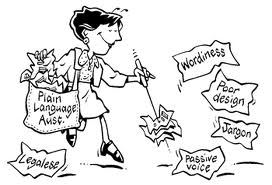 The UN and the World Bank says that 10% of everyone in the world has a disability of some kind. That is a lot! And in addition to that when we get older, over 30% of us will have some disability. These numbers show that thinking about accessibility when writing and designing our content is extremely important. The first questions that should pop up in our heads are: Will my audience find what they need? Understand what they find? Act appropriately on that understanding? There are many reasons why people have trouble reading: cognitive problems, low literacy, physical or vision disabilities, or reading in a second language. But even proficient readers can have problems reading if they are rushed, stressed or tired. You should write in plain language and present your content clearly and flexibly to make it accessible. But how can you do so? Here are some useful tips:
The UN and the World Bank says that 10% of everyone in the world has a disability of some kind. That is a lot! And in addition to that when we get older, over 30% of us will have some disability. These numbers show that thinking about accessibility when writing and designing our content is extremely important. The first questions that should pop up in our heads are: Will my audience find what they need? Understand what they find? Act appropriately on that understanding? There are many reasons why people have trouble reading: cognitive problems, low literacy, physical or vision disabilities, or reading in a second language. But even proficient readers can have problems reading if they are rushed, stressed or tired. You should write in plain language and present your content clearly and flexibly to make it accessible. But how can you do so? Here are some useful tips:
Think about your audience first
Know your audience and make your content suitable for them. You should know what your audience needs. Writing in plain language doesn’t mean dumbing down the content, but making it clear by getting straight to the point.
Make your information easy to understand, even in poor conditions
Keep in mind that not everyone will read every word you write. People are usually in a hurry or multi-tasking. They also read in places that make reading difficult such as poor lightning or on electronic devices with tiny screens. Your content should be easy to scan through! Use topic sentences to introduce the subject of your paragraph before going into details. Also, keep sentences short and concise: avoid the passive voice and use simple and clear verbs.
Your content should be easy to translate
English is the international language. Many readers are non-native English speakers. Make your information easy to translate. Write simply by using words that your readers will be familiar with.
Use lots of headings
Create meaningful headings for each section. Useful headings should communicate the key points of your content, helping readers scan and find the information they need. They can be questions, statements or topics.
Talk to your readers
Get personal and talk directly to your audience. Talking directly to your readers makes a better conversation. People tend to pay more attention if you are referring directly to them. Use “you” and the imperative to give readers instructions.
Put the sections of your content in a logical order from your readers’ perspective. Start with the information they need first. Use bulleted lists or tables to make it easy for them to scan through your text and find specific information.
Be visual
Many people understand information better through images. Use images that illustrate concepts and give them an alternative text or captions. Information graphics and animations showing processes and relationships are also very helpful.
For more information, check out:
http://centerforplainlanguage.org/about-plain-language
Source: Horton, Sarah, and Whitney Quesenbery. A Web for Everyone: Designing Accessible User Experiences. Print.
Sarah Bastos

0 Responses to “Plain language! Simple tips to make your content more accessible”